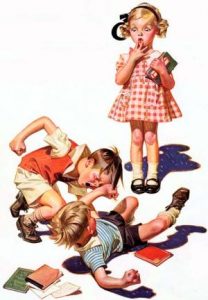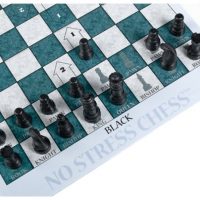
sibling rivalry
One of the oldest stories of sibling rivalry is that of Cain and Abel, as told through the Old Testament and the Torah. While sibling rivalry is not new, our understanding of birth order, personalities and family dynamics has certainly evolved. Regardless of the cause of sibling differences, a certain truth remains; parents play the most important role in helping children to get along. While parents cannot prevent their children from arguing and fighting, they can limit the intensity, the duration and the frequency of fighting.
Intensity of fighting is the greatest concern for parents because the more intense the fight, the more likelihood a child will be hurt physically or emotionally. When young children first show anger it can quickly turn to a physical conflict.
Parents should immediately and strongly intervene by telling the child, in an age appropriate language, what each child (the victim, the provoker or the aggressor) is allowed and what they are not allowed to do in order to have a “fair fight”.
Fair fight rules include fundamentals like no hitting, pushing, yelling, throwing things, spitting, taking the other child’s toy and any other “don’ts” the parents want to include. The consequences for breaking the fair fight rules should be clearly communicated. Children should be given several choices they can make to have a fair fight. For example: ask for what you want, ask the other to stop what they are doing, go play somewhere else, compromise, give in, etc.
The family, with its powerful interpersonal dynamics, is a cauldron for discourse. However, as these techniques become successful and refined, children will often find ways to solve their own squabbles. If all goes well over time (although not necessarily smoothly) it is common to notice that not only are the intensity of disagreements less, but also the duration of fights and frequency of fights will diminish.
“There is no easy answer as to why some siblings get along well while others become locked in conflict. According to studies, enhancing sibling relationships has very little to do with family structure, age spacing, or even the sex of sibling pairs. Instead, children’s individual characters and the family environment are important factors in determining whether brothers and sisters become friends or foes.” (Alison Pike, Tina Kretschmer and Judith F. Dunn, 2008)
My own sister and I had many ups and downs throughout our youth. One minute we were together in total conspiracy while hiding her carrots under the dinner table and the next I was screaming in the backseat of the car because she was looking out my window. After one dramatic incident, our mother told us, “I never had a sister, someday you’ll be glad you have one.” I remember shouting back, “I’ll never be glad to have a sister, no matter how old I get!” Well, as you can probably guess, my sister and I are friends today. And yes, my mother was right, I am glad I have a sister.
“I don’t believe an accident of birth makes people sisters or brothers. It makes them siblings, gives them mutuality of parentage. Sisterhood and brotherhood is a condition people have to work at.” ―Maya Angelou
This article first appeared in The Light Magazine



